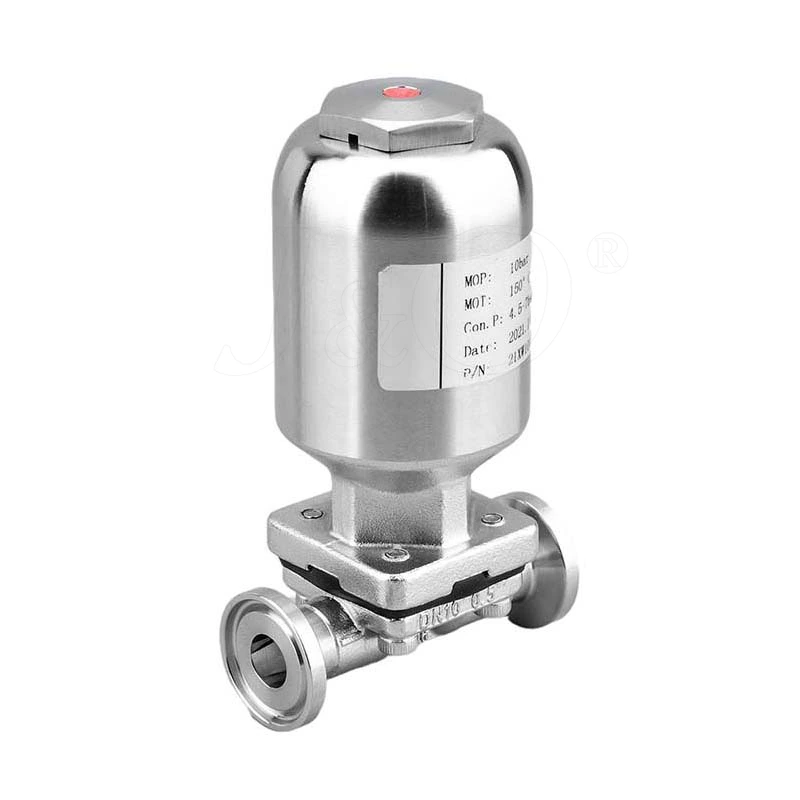What Types Of Sanitary Diaphragm Valves Are There?
The types of Sanitary Diaphragm Valve mainly include the following:
Classification by structural form:
House type: has a specific roof-like structure.
Direct flow type: the fluid channel is straight and has low resistance.
Stop type: used to cut off the flow of fluid.
Straight-through type: the fluid channel passes directly through the valve body, suitable for large flux and high flow rate occasions.
Gate type: a diaphragm valve with a gate structure.
Right-angle type: the inlet and outlet are arranged at a 90-degree angle, suitable for occasions where space is limited or the direction of the fluid needs to be changed.
L type: the valve body adopts a three-channel design with an L-shaped structure, which can realize the reversal of the fluid medium in the three pipelines and is widely used in systems with extremely high aseptic requirements such as biology, pharmaceuticals, and electronics.
Classification by driving mode:
Manual: the movement of the diaphragm is controlled by manually operating the valve stem.
Electric: the valve stem is driven by an electric device.
Pneumatic: The valve stem is driven by a pneumatic device. Pneumatic drive is divided into normally open, normally closed and reciprocating types.
Classification by the number of diaphragms:
Single diaphragm: Only one diaphragm is used to control fluid flow.
Double diaphragm: It has two diaphragms, which are corrosion-resistant and heat-resistant, and are suitable for bioengineering and pharmaceutical fields.
These different types of sanitary diaphragm valves have their own characteristics and applicable scenarios. Users can choose the appropriate type according to their specific needs.
